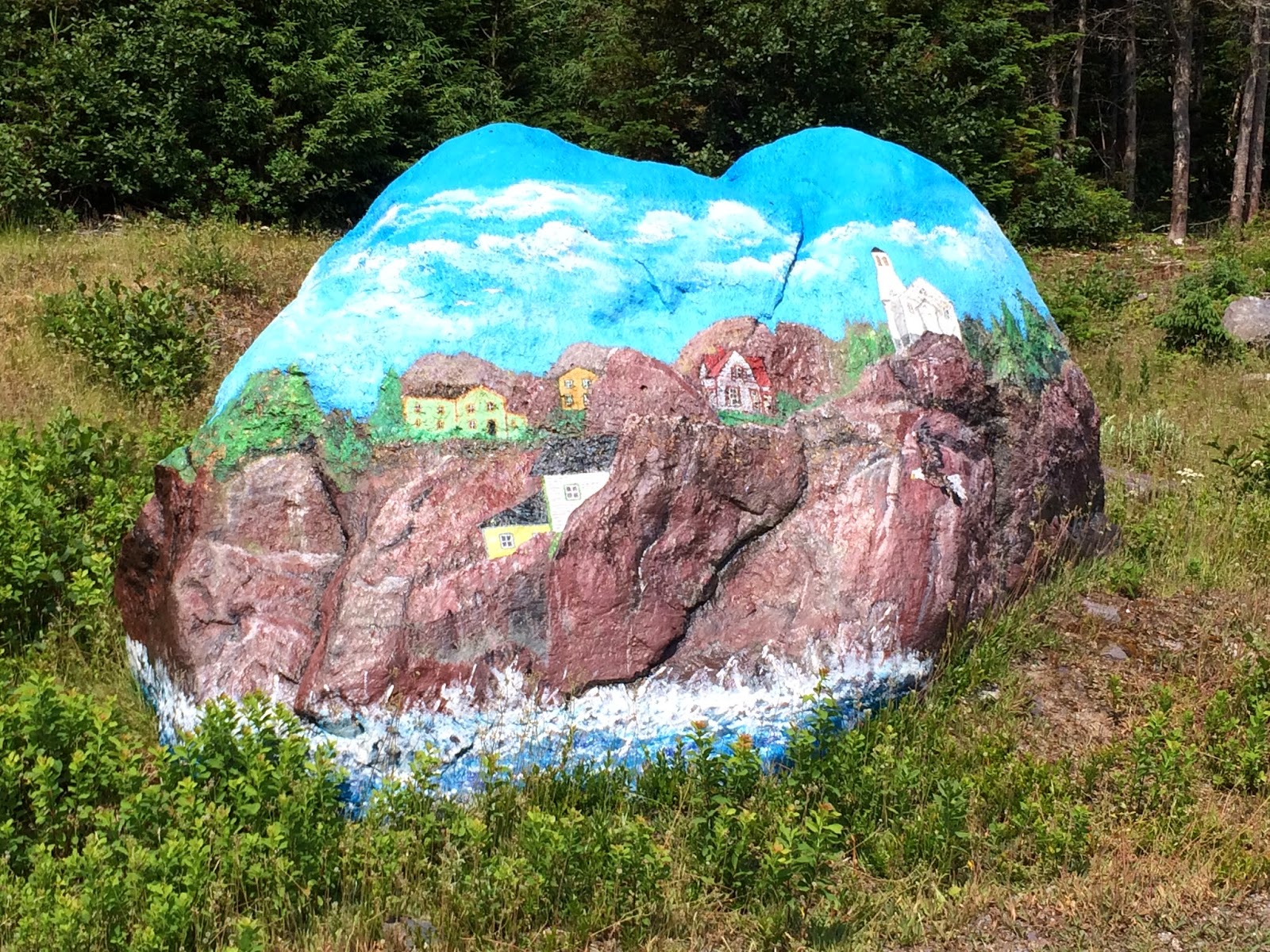Today was a long travel day, over 200 miles. It is still raining today, sometimes quite heavily. We are safe in our Airstream now, tucked away in a campground right outside of Truro, Nova Scotia. A commercial touring group is staying in this campground overnight; about 20 rigs, all motorhomes with toads. As we were setting up they came rolling in, one after another. They are all in a row down the line from us and I think they are all taking a nap now, we don't see anyone.
We are not unhitching since we also are just staying overnight. Since it was raining we didn't stop to take any pictures although I could just kick myself for not stopping and taking a picture of the yard that had four foot cut-outs of every character that was ever on the Simpsons. You have seen yards at Christmas-time with the cut-outs of angels and reindeer. This yard had about 50 Simpson characters. It was quite colorful, but we didn't stop to take a picture.
Since there are no picture of today's travels, I thought I would put down in writing, and pictures (a few repeats), some of our thoughts from our travels in Newfoundland Labrador. We were very taken with this Province, maybe that is because we knew so little about it before we visited and everything was new.
Our very first, and lasting, impression is of the importance of cod fishing on the island.
Cod was the reason for the first European visits and subsequent settlements and, by far, the major economic foundation for centuries. To say that the cod fishing moratorium in 1992 had an catastrophic impact on Newfoundland's economy is an understatement. Newfoundland is still reeling and trying to find a way forward. One on the saddest impacts has been on the young people. In order to make a living they have to leave Newfoundland. Many are going out west, to Alberta, for work in the oil fields. Women leave and become nurses and caregivers in other provinces. The populations of the fishing villages around the island have been reduced by 75%.Those that remain are the older folks who cannot leave for another job. As we would drive from village to village we would often see brand new nursing home facilities on the outskirts. We were told is that, with the younger people leaving, they are not there to care for their parents, who then have to go into these facilities. When we went to the evening musical performance there was a song about "give us back our children."
When you talk with Newfoundlanders, the demise of the cod fisheries is what they still talk about. Someone said to us that the government - when they imposed the moratorium and expected the fishers would just get another job - misunderstood the difference between a "job" and what it was for the Newfoundlanders, a way of life.
All throughout Newfound we saw lots of new home building, often large, contemporary styled, homes. We were told that the young people go off to the oil fields, make a lot of money and come home and spend it on building these large homes. There is concern that they are not saving their money, but just spending what they have.
We also learned that, despite this major economic challenge, Newfoundlanders are very friendly, out-going, caring and optimistic.
The colors of Newfoundland, bright and vibrant. Also, the creativity of using discarded washing machine drums for fire holders.
Encouraging tourism. Elliston, root cellar capital of the world!
Newfoundland is know as "The Rock." That is what the island is, a big chunk of rock with just a very thin veneer of soil, mostly peat, in a few places. There was almost no agriculture that we saw. We saw one field of corn that was notable because it was the only one we saw. Newfoundlanders celebrate their rock.
Yard art on the east side of the island above; and on the west side.
We saw very few mailboxes by the road. Instead there was an array of mailboxes in every village.
Even out in the country.
Another domestic item; every home, in villages and out in the woods, have these trash can boxes at the end of their driveways. These are plain white, but we saw colorful ones and decorated ones.
Because there is no soil, utility poles cannot be put in holes. Instead, marching across the island are these rock cribs that permit electric and phone lines to be strung.
Wilfred T. Grenfell, an inspiration. I'm still amazed by his courage and selflessness. He said, "When two courses are open, take the most venturesome one."
Inukchuk - in Labrador they pop-up everywhere, a reminder of ancient cultures.
Everywhere on the island are these rather fearsome reminders to be watchful for moose - "keep a clear eye", we always say.
Gros Morn National Park has it's own version. Kinda tells the story, eh?
Use of the term "livyers" - meaning decedents of Europeans who settled in Newfoundland. This word is used throughout the province, even in official writings and descriptions.
Rhode Island connection at St. Anthony's, in Grenfill's medical facilities. In 1906, Jessie Luther, a RISD grad, started a small workshop teaching convalescing patients weaving and other crafts. This was one of the first attempts at occupational therapy. This tradition continues today.













No comments:
Post a Comment